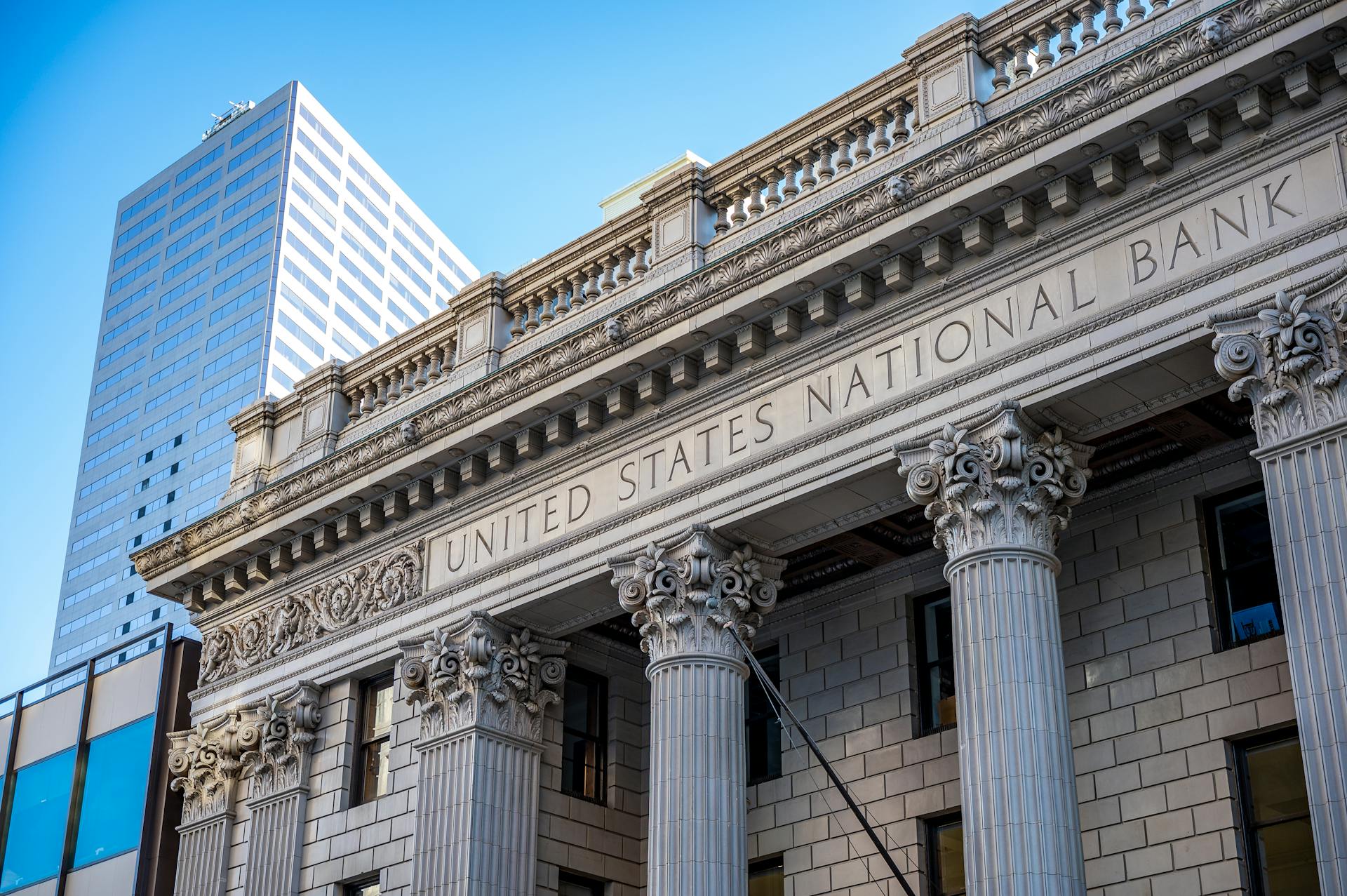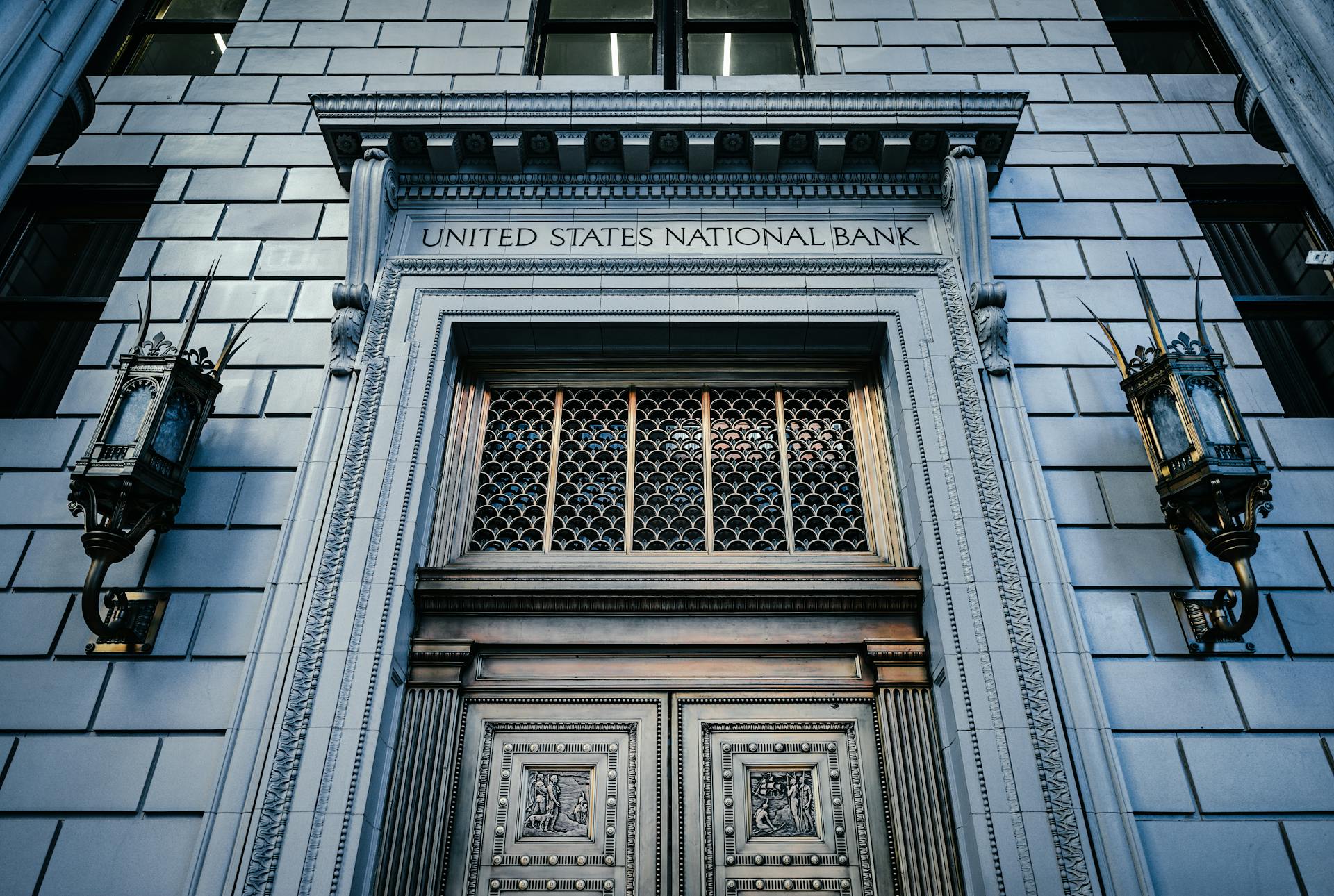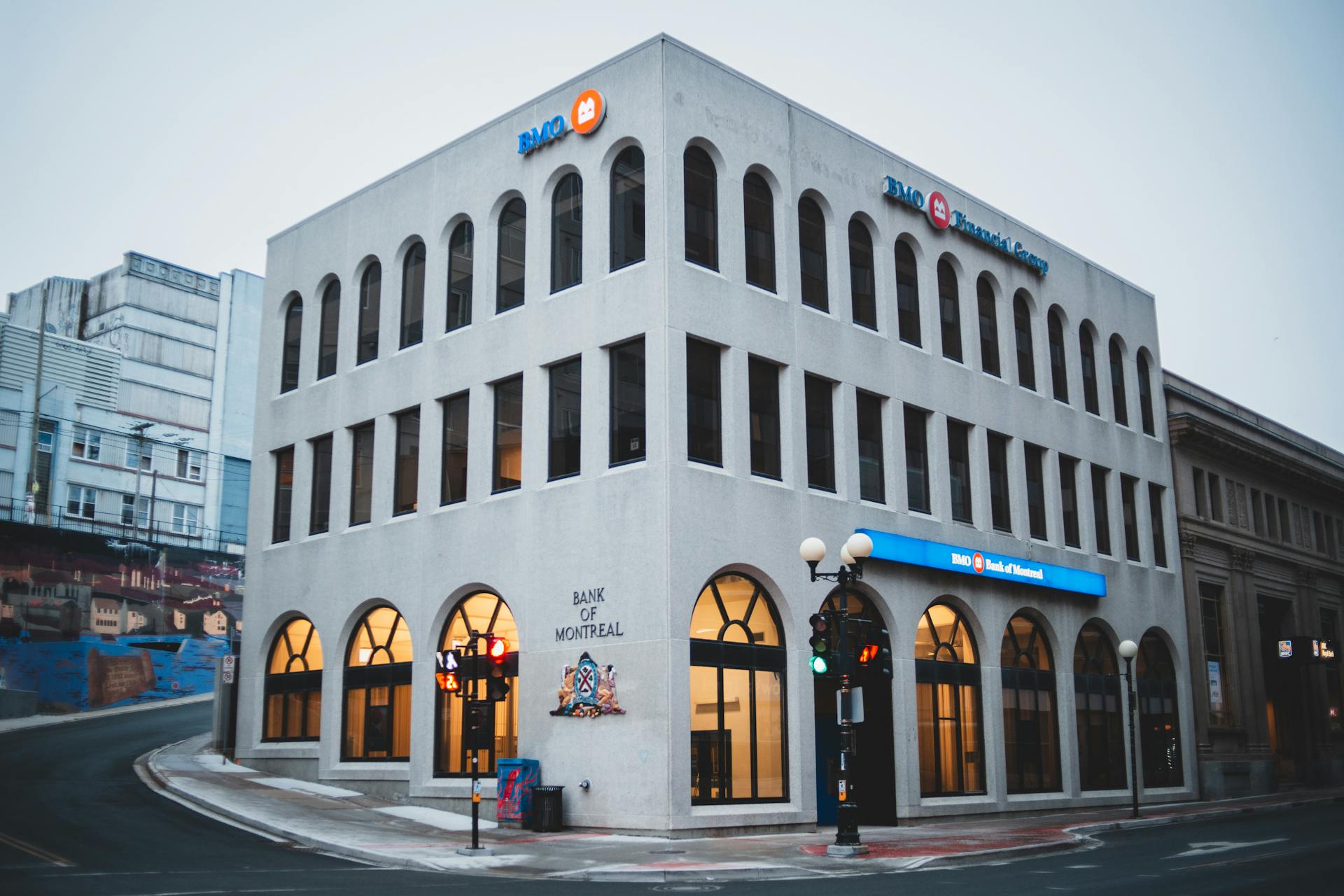
The National Bank of Serbia is the central bank of Serbia, responsible for maintaining the stability of the country's financial system. It was established in 1884 and has been serving the nation's financial needs for over a century.
The National Bank of Serbia is headquartered in Belgrade, the capital city of Serbia. The bank's main goal is to maintain price stability and ensure the smooth functioning of the financial system.
As the central bank, the National Bank of Serbia has a range of responsibilities, including setting monetary policy, regulating the banking sector, and managing the country's foreign exchange reserves.
See what others are reading: Banking in Serbia
History of the Bank
The National Bank of Serbia has a rich and complex history that spans over a century. It was established in 1884 as the Privileged National Bank of the Kingdom of Serbia.
The bank was created by law of King Milan I on January 18, 1883, and was modeled after the National Bank of Belgium, which provided technical assistance to Serbia for its creation.
The bank started operations on July 14, 1884, with Aleksa Spasić as its first governor. It was initially located at 38 Knez Mihailova Street, Belgrade.
You might enjoy: List of Banks in Serbia
Founding and Early Years

The National Bank of Serbia was founded in 1884 as the Privileged National Bank of the Kingdom of Serbia, marking the beginning of a long history of banking in the country.
King Milan I created the National Bank of the Kingdom of Serbia by law on January 18, 1883, with a charter that granted the State significant oversight over its operations.
The bank's first governor was Aleksa Spasić, appointed in March 1884, and it started operations on July 14, 1884.
The bank was originally located at 38 Knez Mihailova Street, at the corner of Dubrovačka Street, but it moved to a larger building on Knez Mihailova Street in 1890, which remains known as the National Bank Building.
The bank's ownership structure was debated between those who advocated for foreign capital and those who wanted to keep it domestic, but a conference in May 1883 resolved that Serbian merchants and business leaders would provide the capital.
The bank opened branch offices in Skopje and Bitola in December 1913, and during World War I, it was able to move much of its assets to Marseille in late 1915.
Recommended read: Hibernia Bank Building (San Francisco)
Key Milestones

The Bank's journey has been marked by several key milestones that have shaped its present and future. The Bank was founded in 1856 by a group of local businessmen who saw a need for a financial institution in the community.
The Bank's first branch was opened in 1860, with a small team of employees working from a single location. This marked the beginning of the Bank's expansion into the region.
In 1870, the Bank introduced its first savings account, which quickly gained popularity among the community. The account allowed customers to deposit and withdraw funds at their convenience.
The Bank's growth continued throughout the late 19th century, with the number of branches increasing from 5 to 15 between 1880 and 1890. This expansion enabled the Bank to serve a wider customer base.
The Bank's commitment to innovation led to the introduction of the first automated teller machine (ATM) in 1970, making banking more convenient for customers. This marked a significant shift in the way people banked.
The Bank has continued to evolve and adapt to changing customer needs, with a focus on providing excellent customer service and innovative financial solutions.
On a similar theme: Regions Bank Credit Card Phone Number
Headquarters Building

The headquarters building of the bank has a fascinating history. It was designed by architect Grujo Golijanin.
Construction on the building started in the early 1990s, but it was put on hold due to Serbia's financial and political challenges at the time. The project was eventually restarted in the 2000s.
The building was finally completed and inaugurated in 2006.
For another approach, see: Mechanics' Bank and Trust Company Building
Bank Operations
The National Bank of Serbia performs its duties through its organizational units, which are responsible for various aspects of bank operations. The Bank Supervision Department, for example, is responsible for monitoring the solvency and legal grounding of operations performed by commercial banks and other financial institutions.
The National Bank of Serbia also regulates the level and manner of maintaining minimal liquidity of banks, which is crucial for ensuring the stability of the financial system. This is done through the Bank Supervision Department, which may issue an order to a bank that acting in breach of monetary policy measures, to remove the discovered irregularities.
The National Bank of Serbia's organizational units include the Monetary System and Policy Department, which is responsible for determining the monetary policy, regulation of the money in circulation, and operations performed in the name and for the account of the Republic of Serbia.
You might like: Basel Committee on Banking Supervision
Serving Citizens and Businesses
Bank operations play a vital role in serving citizens and businesses alike.
Online banking services provide 24/7 access to account information and transactions, allowing customers to manage their finances at their convenience.
With mobile banking apps, customers can deposit checks remotely and transfer funds between accounts.
Businesses can also benefit from online banking, with features like bill pay and account reconciliation.
Digital payment systems, such as contactless cards and mobile wallets, have become increasingly popular among consumers.
These systems offer a secure and convenient way to make transactions, reducing the need for cash and checks.
By offering a range of digital services, banks can improve customer satisfaction and loyalty.
In addition, digital services can help banks reduce costs associated with maintaining physical branches and handling transactions.
This can enable banks to invest in new technologies and services that benefit both citizens and businesses.
If this caught your attention, see: All Bank Online Banking
Raises Key Policy Rate
The bank's decision to raise its key policy rate can have a significant impact on the economy. This rate, also known as the benchmark interest rate, is the rate at which banks lend and borrow money from each other.
Expand your knowledge: Ethiopia National Bank Exchange Rate
By increasing the key policy rate, the bank aims to control inflation and stabilize the economy.
The bank's monetary policy committee meets regularly to assess the state of the economy and decide whether to adjust the key policy rate.
A higher key policy rate makes borrowing more expensive for consumers and businesses, which can lead to reduced spending and investment. This can help to curb inflation and maintain economic stability.
The bank's decision to raise the key policy rate can also affect the value of the currency, making imports more expensive.
You might enjoy: Key Bank Tooele
Frequently Asked Questions
Can a US citizen open a bank account in Serbia?
Yes, a US citizen can open a bank account in Serbia. They can freely choose from over 30 banks in Serbia and open an account without being physically present
What is the interest rate in Serbia?
As of October 2024, the short-term interest rate in Serbia is 5.75% per annum. This rate is set by the National Bank of Serbia and may be subject to change.
Sources
- https://nbs.rs/en/indeks
- https://en.wikipedia.org/wiki/National_Bank_of_Serbia
- https://en.wikipedia.org/wiki/Privileged_National_Bank_of_the_Kingdom_of_Serbia
- https://www.ecbs.org/banks/serbia/national-bank-of-serbia/view-details.html
- https://n1info.rs/english/news/national-bank-of-serbia-again-raises-key-policy-rate/
Featured Images: pexels.com


